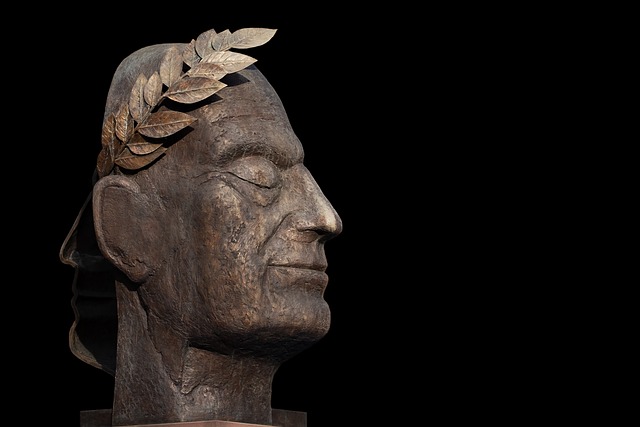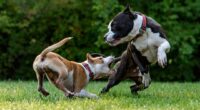Plebeians were considered to be commoners with limited rights and resources, patricians enjoyed a considerable amount of privilege and power in ancient Rome. Although the divide between these two classes was not absolute, it provided an effective way for a wider society to organize itself. This system shaped Roman civilization in ways that can still be seen today, making understanding this difference imperative for anyone studying Ancient Rome’s history or culture.
Who were plebeians?
The plebeians were the common people of Rome who were not members of the patrician class. The plebeians made up the majority of the population, but they were not given the same rights as the patricians. Plebeians could not rise to that level no matter how much money they made. This caused frustration among the plebeians, which sometimes led to violence.
Who were patricians?
In ancient Rome, patricians were a class of privileged citizens. The term patrician comes from the Latin word for father, patres. Patricians were the wealthier citizens of Rome who could trace their ancestry back to the city’s founding fathers. They held all the power in Roman society and dominated politics, the economy, and the military.
Plebeians Vs. Patricians – Key differences
Plebeians and patricians were two distinct social classes in ancient Rome. The distinction between the two classes was based on birth and wealth.
Patricians were the elite and powerful class of ancient Rome, who were considered the nobility. They were the descendants of the original senators and magistrates who founded the Roman Republic. Patricians were the only people who could hold high public office, such as the consulship or praetorship, and they made up the majority of the Roman Senate.
Plebeians, on the other hand, were the common people of Rome who were not of noble birth. They included farmers, artisans, merchants, and laborers. In the early Roman Republic, they were excluded from political power and had limited rights. However, they eventually gained greater political power through struggle and protest, and by the end of the Republic, they could hold public office, and some even became senators.
The social and economic differences between patricians and plebeians were vast. Patricians were generally wealthy and owned large estates, while plebeians were mostly poor and owned small plots of land or worked as laborers. Patricians also had greater access to education and were more likely to have a formal education than plebeians.
Despite these differences, there were some patricians who sympathized with the plebeians’ struggles and advocated for greater rights and representation for them. In time, the distinctions between the two classes became less pronounced, as wealth and education became more important markers of social status than birth.
https://www.youtube.com/watch?v=Ftl1tpQ_BQg
Were plebeians allowed to marry patricians?
The short answer is no, plebeians were not allowed to marry patricians. This was due to the fact that patricians were a part of the upper class while plebeians made up the lower class. The two classes were very distinct from one another and marriages between them were not common. There are, however, a few recorded instances of plebeian-patrician marriages. These usually occurred when a patrician woman fell in love with a plebeian man and eloped with him against her family’s wishes. While such unions were not common, they did occur on occasion.
When did Roman girls marry?
Roman girls typically married around the age of 14, although some girls as young as 12 might marry if their parents arranged it. The average age for boys to marry was older, around 18.
Girls from wealthy families often married much later than 14, sometimes in their early 20s. This was because they had a higher social status and could afford to wait longer to find a suitable match. Poor girls, on the other hand, were more likely to marry young because they needed the economic stability that marriage provided.
Were plebeians allowed to own land?
The short answer is no, plebeians were not allowed to own land. The Roman Republic was founded on the principle of land ownership by the patrician class, and this remained largely unchanged throughout the course of the Republic. Plebeians could, however, lease land from patricians and cultivate it for their own use. This arrangement was not without its problems, as plebeians often found themselves at the mercy of their landlords and could be evicted at any time.
What do female patricians do compared to plebeian women?
In ancient Rome, patrician women had a very different life compared to plebeian women. They enjoyed a high social status and were expected to conduct themselves with dignity and grace. However, their roles were still primarily restricted to the domestic sphere, and their lives were closely controlled by their fathers or husbands.
Patrician women had access to education, and some were even tutored by famous philosophers and scholars of the time. They were also expected to be proficient in music, dance, and other arts. They used their free time to socialize with other patrician women, attend dinner parties, and participate in religious festivals and ceremonies. They also enjoyed attending public spectacles, such as gladiatorial games and chariot races.
Patrician women would often spend their free time engaging in leisure activities, such as embroidery, needlework, and other crafts. They also enjoyed playing board games and other indoor games. Some patrician women were also involved in charity work, such as helping the poor and providing aid to victims of disasters.
However, the lives of patrician women were also very restricted, and they had limited freedom and autonomy. They were expected to maintain their virtue and honor, and any breach of these values could result in severe consequences, including divorce, banishment, or even death. They had limited access to the public sphere and could not participate in political life or hold public office.
In contrast, plebeian women had more freedom to work outside the home and participate in public life. They often had to work to support their families, and some even held jobs as street vendors, midwives, or cleaners. However, they still faced many challenges and were often subject to discrimination and exploitation.
What was the typical lifestyle of plebians?
(Photo by Birmingham Museums Trust on Unsplash )

The lifestyle of plebeians in ancient Rome varied depending on their social status, occupation, and income. Plebeians were the common people of Rome, who made up the majority of the population. They included farmers, artisans, merchants, and laborers.
Plebeians typically lived in small, crowded apartments in multi-story apartment buildings known as insulae. These apartments were often poorly constructed and lacked basic amenities such as running water and sewage systems. As a result, diseases and epidemics were common, and life expectancy was low.
Most plebeians worked long hours, often in difficult and dangerous conditions, to make a living. Some worked in agriculture, tending to crops or raising livestock, while others worked as artisans or traders, selling goods in the local market. Many plebeians worked in construction or manual labor, building roads, bridges, and other public works projects.
Plebeians had limited access to education and were often illiterate. However, some plebeian families valued education and would hire private tutors for their children. Plebeian children could also attend public schools run by the state, but these schools were often of poor quality.
In their free time, plebeians enjoyed attending public spectacles such as gladiatorial games, chariot races, and theater performances. They also celebrated religious festivals and holidays and would often gather with friends and family for communal meals and celebrations.
What was the typical lifestyle of patricians?
The typical lifestyle of patricians in ancient Rome was very different from that of the plebeians. Patricians were the wealthy and powerful class of Roman society, who traced their ancestry to the original founders of Rome.
Patricians enjoyed a life of luxury and leisure. They owned large estates in the countryside, as well as townhouses and villas in the city. These properties were often staffed with a large retinue of servants, including cooks, maids, and butlers.
Patricians spent their time engaging in cultural pursuits, such as music, dance, and literature. They were expected to be well-educated and proficient in a range of subjects, including philosophy, history, and poetry. Many patricians had private tutors, who would provide them with individualized instruction in these subjects.
Patricians also enjoyed attending public spectacles, such as gladiatorial games and chariot races, and were often patrons of the arts, supporting musicians, actors, and other performers.
Despite their leisurely lifestyle, patricians were also expected to participate in public life and hold public office. Many patricians served as senators or magistrates, helping to govern the Republic and make decisions that affected the entire population of Rome.
What were the 4 levels of Roman society?
The four levels of Roman society were The Patricians, The plebeians, The Slaves, and Freedmen.
The patricians were the upper class.
The plebeians were the lower class.
Slaves were owned by The patricians
Freedmen were former slaves who had been granted their freedom.








